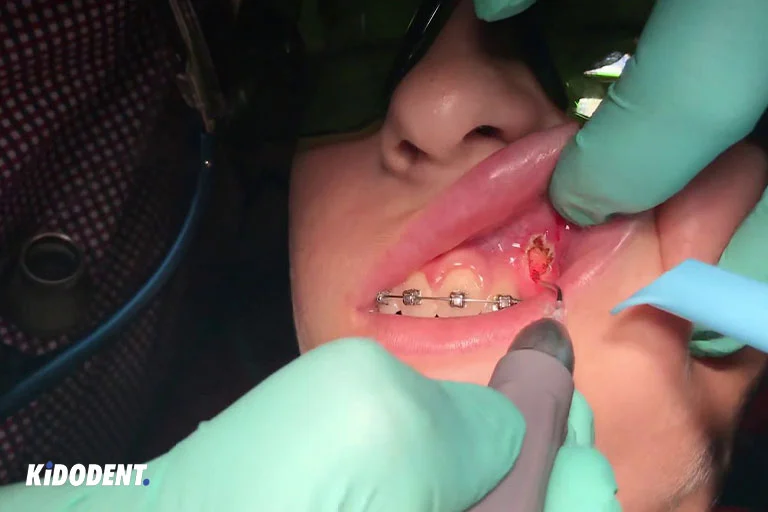If you are imagining a one-session procedure of straightening your teeth with a laser, you need to reconsider your position. Laser is not directly involved in the alignment process. By reading the article, you will know more about the role of lasers and orthodontists in fixing malformed teeth in a convenient and fast way.
What kind of laser technology is used in orthodontics?
Laser, as it stands for light amplification by the stimulated emission of radiation, is an alternative method that complements the process of orthodontics on soft tissues without surgery. By laser, we mean Diode laser which has gained popularity over the years.
The laser makes the orthodontics faster
As we mentioned, the laser is not directly involved in straightening teeth but makes the process of orthodontics faster.
How does laser provide a quick orthodontics treatment?
Although it is not a direct strategy, with an accurate diagnosis, it can facilitate the alignment process in some patients.
Variations exist in the examinations that may challenge the dentist specialists. Some of these challenges are:
- Abnormal frenum growth
- Gingival overgrowth and crowded teeth
- Impacted teeth
- Oral abscess and plaque
Orthodontists reduce the time needed to overcome those problems. You will read more about the role of laser treatment in the following passages.
Wisdom tooth removal using the laser in orthodontics
Wisdom teeth are the third widest molar and last teeth that erupt (grow) on each dental arch from 17 to 25 years of age.
In some patients with crowded teeth and protruding teeth problems, teeth eruption may face difficulties, causing impacted wisdom teeth or sometimes semi-impacted wisdom teeth.
Impacted wisdom teeth cause timely orthodontic treatment and tooth discrepancies. A Laser is used to remove the overgrown gum tissues, which in turn, makes the orthodontics process easier. Managing impacted wisdom teeth is the most important work to do.
Canine tooth surgery
Similarly, impacted canine teeth can happen and can be on display by diode laser. Brackets are used to relocate their position. Orthodontics with laser is time-saving here in impacted canine tooth removal, compared to surgical removal that involves an incision in the gum and therefore takes much time for healing.
Crown length
When extra gum tissue covers the teeth, it is called a gummy smile. You see more gums visible than a normal smile. It influences your self-esteem and can result in a negative self-image. It also impacts the orthodontics wire and brackets arrangement.
Therefore, you can try laser with orthodontics. As a pretreatment way, to reduce the side effects or any risks, extra gum tissues are removed. Laser technology not only treats gummy smiles but also fits brackets in the right position.
Frenectomy
A frenum is an oral musculature organ connecting three parts of the oral cavity as follows: gum tissue to both upper and lower lips, tongue against the floor of the mouth.
Normally frenum is an appendix and sometimes can overgrow which leads to problems with chewing, speaking, and conditions like diastema or gaps between front teeth as a result of maxillary or mandibular deficiency.
Some people try orthodontic treatment for the front teeth gaps, and it is not possible without frenum removal. To fill the gap and remove the frenum, surgical procedures or lasers are solutions to do. Again laser can make operation faster. Frenectomy is an important laser operation mode in orthodontics treatment.
Soft tissue abscess treatment
The healthier the teeth and gums, the better it is for orthodontists and specialists to ensure an ideal straightening. Oral problems like abscesses or plaque can defer that process. The laser can be practical in treating these wounds and infections during the orthodontics process.
How much does laser orthodontics cost?
Depending on the type of laser treatment, costs vary, too. But remember that it saves you a lot of time and money in orthodontics treatment.
